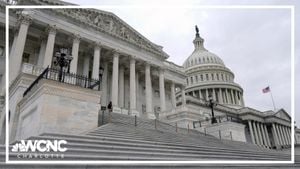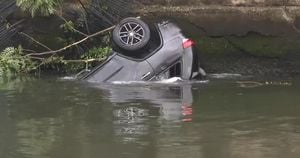The U.S. Department of Transportation's Maritime Administration (MARAD) has recently announced plans to channel nearly $580 million from the Bipartisan Infrastructure Law toward port improvement initiatives across the nation. This funding aims to upgrade 31 port projects located within 15 states and one U.S. territory, contributing significantly to the overall efficiency and capacity of various U.S. ports.
This ambitious move falls under President Biden's broader "Investing in America" agenda, which seeks to bolster the nation's supply chains by enhancing the infrastructure at coastal seaports, Great Lakes ports, and inland river ports. According to U.S. Secretary of Transportation Pete Buttigieg, the ports play a pivotal role in maintaining supply chain reliability and keeping costs manageable for American families.
Buttigieg underscored the importance of these investments, stating, "America's ports are the backbone of our supply chains and, thanks to the Biden-Harris Administration, we have projects underway all across the country—from Long Beach to Milwaukee to Monroe—that are making it possible for our ports to move more goods each year and keep costs down for families."
The funding derived from the Port Infrastructure Development Program (PIDP) is designated to improve port infrastructure, ensuring it meets the growing freight transportation needs of the present and future. Notably, the PIDP was allocated $2.25 billion through the Bipartisan Infrastructure Law, which provides not only capital funding but also project management guidance to both urban and rural ports.
Maritime Administrator Ann Phillips emphasized the necessity of modernizing the nation's port infrastructure, explaining, "Approximately 2.3 billion short tons of goods move through U.S. waterways each year. The benefits of developing port infrastructure extend far beyond the maritime sector." These enhancements will not only assist with capacity and efficiency but are also intended to address the environmental and health impacts on surrounding port communities.
Among the identified projects are significant upgrades planned for the Port of Oakland, Georgia Ports Authority, Don Young Port of Alaska, and Port of Davisville. These enhancements are poised to strengthen supply chain reliability, create new workforce development opportunities, and improve freight efficiency.
Revamping America’s port infrastructure is part of the Biden-Harris Administration's larger effort to create more resilient supply chains. Following widespread disruptions from the COVID-19 pandemic, President Biden launched the Supply Chain Disruptions Task Force and later established the Council on Supply Chain Resilience. These initiatives aim to proactively mitigate supply chain vulnerabilities and lower inflation across the economy.
Experts believe the investments announced by MARAD will play a pivotal role moving forward. Antonio Santos, Federal Climate Policy Director for Pacific Environment, remarked on the importance of targeting pollution reduction at ports. He celebrated the $53 million project slated for Port Everglades, which will focus on deploying zero-emissions cargo-handling machinery and retiring outdated diesel-powered equipment. Santos emphasizes the necessity of achieving zero emissions within the maritime sector, aiming to safeguard the health of workers and communities situated near ports.
Complementing this funding announcement, the U.S. Environmental Protection Agency (EPA) recently unveiled nearly $3 billion through its Clean Ports Program. With funding sourced from the Inflation Reduction Act, these grants are aimed at deploying zero-emission equipment and supporting climate resiliency planning efforts at ports nationwide. This dual investment is geared toward reducing harmful diesel air pollution prevalent at ports, promoting environmental justice, and enhancing job opportunities.
Overall, the push to upgrade U.S. port infrastructure through such substantial funding initiatives marks a significant step toward improving not only the efficiency and capacity of freight transport but also driving sustainable and eco-friendly practices within the nation's supply chains.



